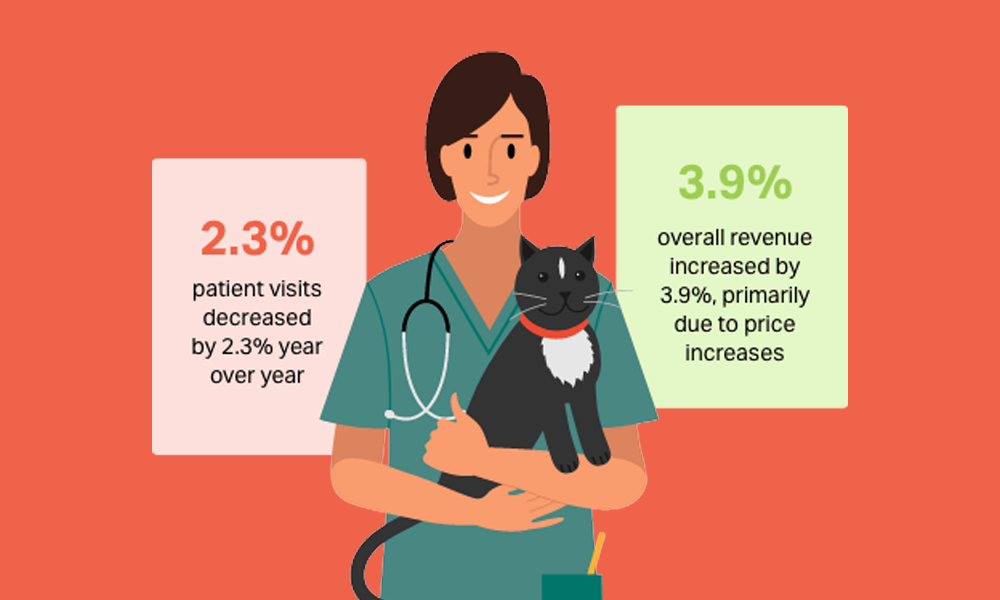
Veterinary Key Facts and Statistics to Know
The veterinary industry in 2025 is undergoing significant transformation, shaped by advancements in technology, evolving economic conditions, and shifting demands for animal healthcare. From workforce challenges and rising service costs to the adoption of innovative diagnostic tools, the field continues to adapt to meet the needs of both pets and their owners in a dynamic landscape. Here we will cover veterinary key facts and statistics you need to know.
Veterinary workforce: A growing demand with a limited supply
The veterinary profession continues to see rising demand, but a shortage of veterinarians could present challenges in the coming years. Over the past decade, the number of first-year veterinary students in the U.S. has grown by 2.7% annually, leading to a 37.7% total increase from 2012 to 2023. In the 2022–2023 academic year, U.S. veterinary colleges enrolled more than 4,000 first-year students for the first time.
However, even with this growth, experts predict a significant shortage of veterinarians. A study by the American Association of Veterinary Medical Colleges (AAVMC) estimates that 70,092 new veterinarians will be needed in the U.S. by 2032, but only 52,926 are expected to graduate within that time frame. This potential gap in supply could put pressure on existing veterinary professionals and impact service availability.
The veterinary services market is expanding
Despite workforce concerns, the veterinary services market is growing at an impressive rate. In 2024, the global veterinary market was valued at $156.4 billion, and by 2025, it is projected to reach $168.86 billion, reflecting an annual growth rate of around 8%.
This growth is driven by increasing pet ownership, higher spending on pet healthcare, and advances in veterinary medicine. However, rising costs have also made veterinary care less accessible for some pet owners, leading to concerns about affordability.
Rising veterinary costs and industry consolidation
The cost of veterinary care has risen by 60% since 2015, largely due to industry consolidation. Private equity firms and large corporations have been acquiring independent veterinary practices, reducing competition and potentially driving up prices.
For pet owners, this means higher costs for routine checkups, emergency visits, and specialized treatments. While veterinary professionals strive to provide the best care possible, economic pressures can make it difficult for some owners to afford necessary treatments, forcing them to make tough decisions regarding their pets’ health.
Declining patient visits despite higher revenue
Interestingly, while veterinary practices have seen a 3.9% revenue increase, patient visits have actually declined by 2.3% year-over-year. This trend suggests that higher service prices may be leading pet owners to visit the vet less frequently or delay non-urgent treatments.
In a time of economic uncertainty, some pet owners are forced to make difficult choices, including postponing veterinary visits or even considering euthanasia due to financial constraints.
Technology is changing veterinary medicine
Despite financial and workforce challenges, technology is revolutionizing veterinary medicine. AI-powered diagnostic tools, telemedicine, and improved practice management software are helping veterinarians provide better care while increasing efficiency. These innovations can help alleviate some of the pressures of staff shortages and improve the overall patient experience.
Legislative changes impacting veterinary practices
New laws are also shaping the future of veterinary medicine. For example, New York’s Companion Animal Care Standards Act, which goes into effect in December 2025, introduces updated requirements for animal shelters, including stricter veterinary care protocols. Changes like this highlight the growing role of legislation in improving pet welfare and veterinary standards.
The future of veterinary medicine
The veterinary industry in 2025 is at a crossroads. While the demand for services continues to grow, challenges such as staffing shortages, rising costs, and declining patient visits pose significant hurdles. However, innovations in technology and legislative efforts aimed at improving animal care provide hope for the future.
For veterinarians, pet owners, and industry stakeholders, staying informed about these trends is essential to navigating the changing landscape of veterinary medicine.
